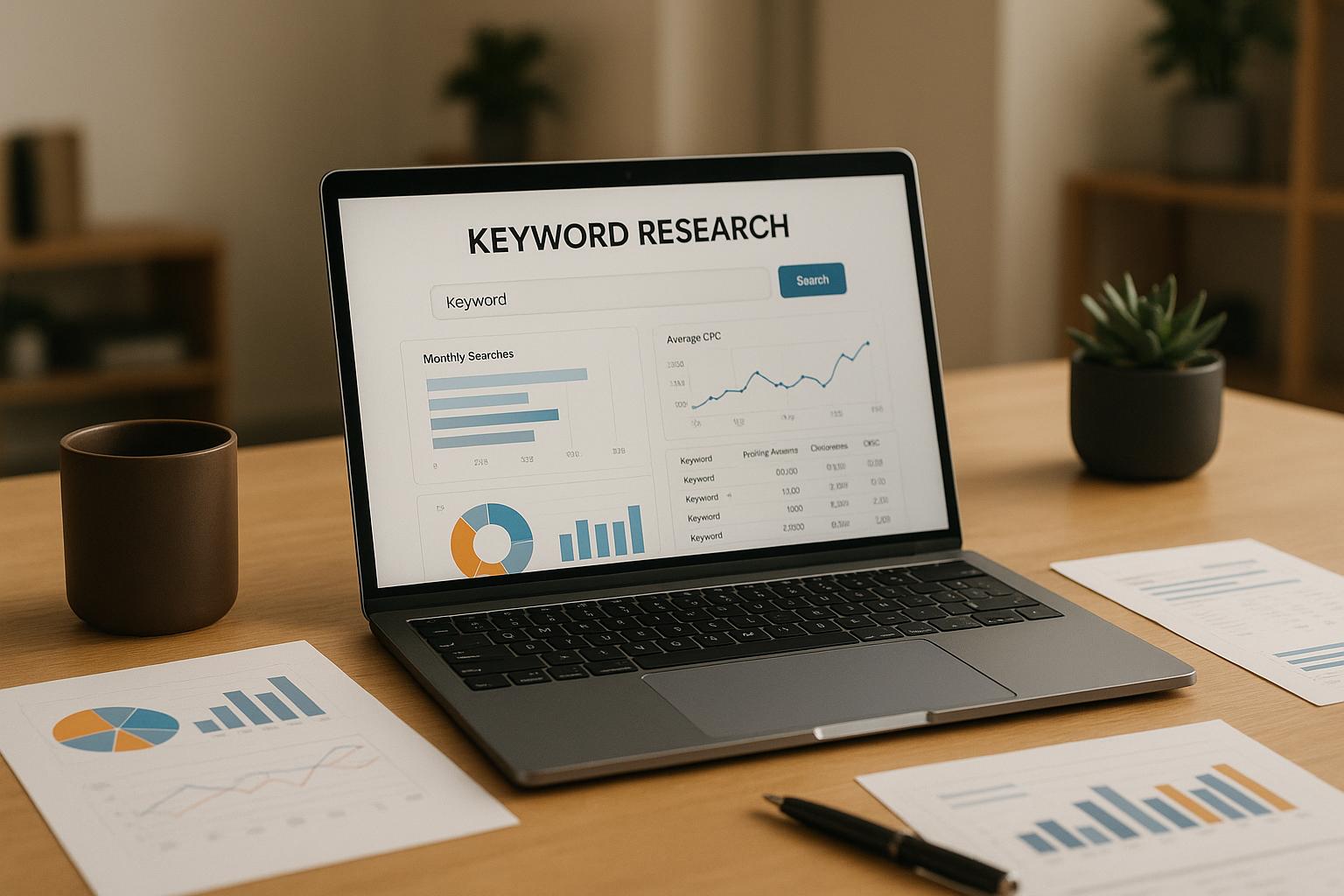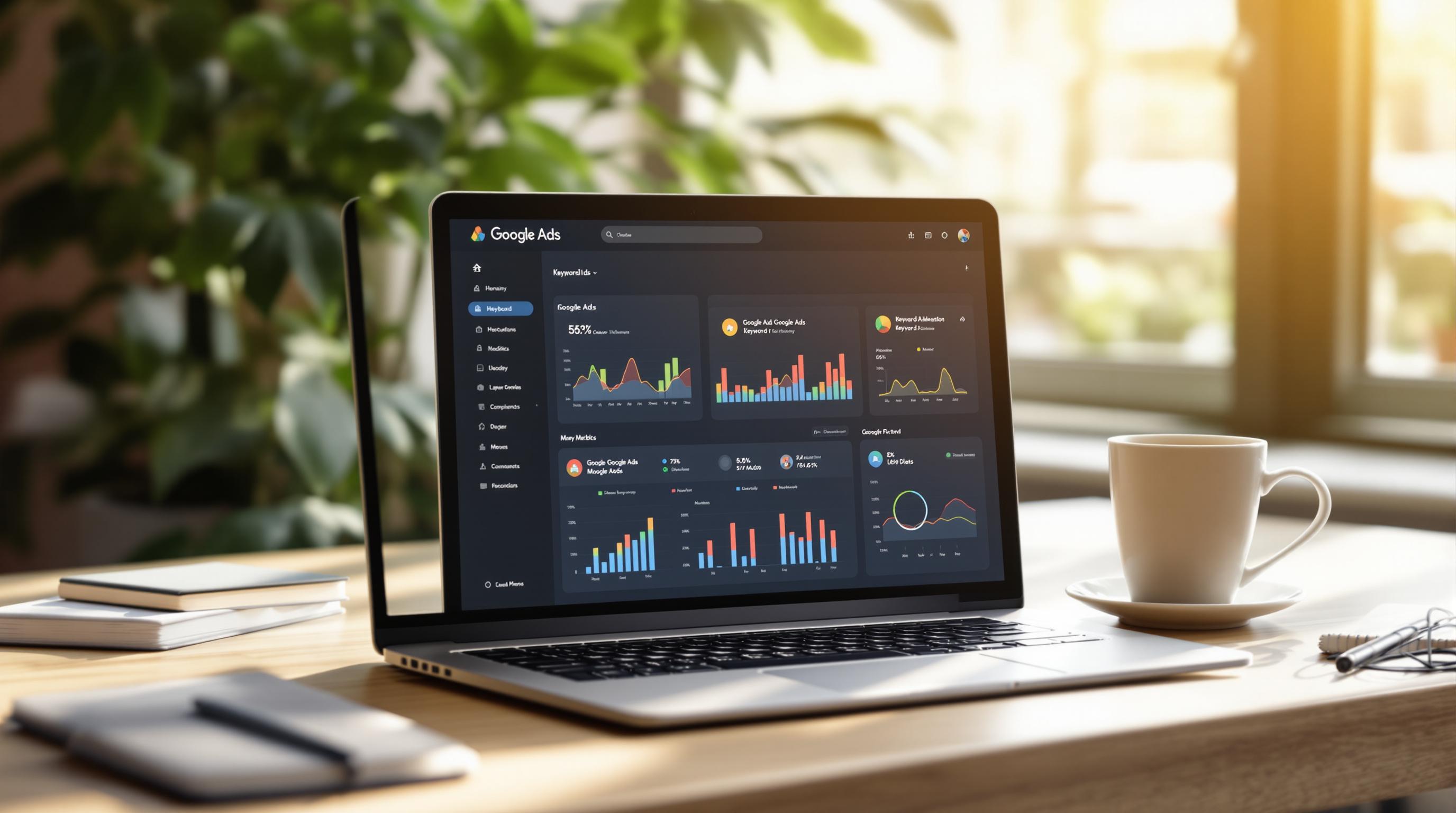Audience synchronization issues can waste ad spend, hurt ROI, and frustrate customers. Here’s how to fix them quickly:
-
Problem 1: Data Silos
Customer data is scattered across platforms, making it hard to create unified profiles.
Solution: Use identity resolution tools like Hightouch or Deep Sync to merge data. -
Problem 2: Platform Conflicts
Different platforms handle data differently, causing errors.
Solution: Standardize audience categories and use tools like Census to streamline syncing. -
Problem 3: Sync Delays
Outdated suppression lists lead to irrelevant ads.
Solution: Set up real-time sync systems to avoid targeting errors. -
Problem 4: Privacy Compliance
Managing consent across platforms is tricky.
Solution: Automate consent management with CMPs like Osano or Cookiebot. -
Problem 5: Attribution Errors
Mismatched audience definitions disrupt tracking.
Solution: Use unified measurement systems for consistent reporting.
Key Takeaway: Syncing audiences effectively ensures accurate targeting, saves money, and improves customer experiences.
Google Analytics 4 audiences not populating in Google Ads? Here are the solutions
5 Common Audience Sync Problems
When it comes to keeping audience data consistent across platforms, marketers face several hurdles that can disrupt campaign performance. Let’s look at five of the most frequent challenges teams encounter when trying to synchronize audience data.
Data Split Across Different Platforms
One of the biggest challenges is data fragmentation - customer information scattered across various tools and systems without proper integration. This leads to isolated data silos, making it nearly impossible to create a complete customer profile or deliver seamless experiences.
A staggering 96% of marketers use at least two platforms, 82% use four, and 21% rely on more than six. Each platform collects its own data, but without integration, these pieces never come together. For example, your email platform might not know what your website visitors are doing, or your social media ads might lack access to purchase history from your e-commerce system. The result? Incomplete audience segments that miss key targeting opportunities.
"Data quality is directly linked to the quality of decision making." – Melody Chien, Senior Director Analyst at Gartner
This isn’t just inconvenient - it’s costly. Poor data hygiene costs organizations around $12.9 million annually. Even platforms within the same ecosystem, like Google Ads and Google Analytics, collect different types of data, requiring careful integration to create unified audience insights.
Platform Differences and Conflicts
Every advertising platform has its own way of defining audiences, structuring data, and managing API requests. These differences can make synchronization a frustrating and error-prone process.
For instance, Braze imposes limits on API calls and charges based on data points, which can make syncing large volumes of data a challenge. A dataset that works seamlessly in Facebook's Custom Audiences might need significant reformatting before it can be used in Google's Customer Match. Without efficient integration, API limits are quickly reached, causing delays and scalability problems for larger campaigns.
To address this, tools like Census use "BrazeDiff" technology to only sync updated data points, helping businesses avoid unnecessary API usage and delays. But even with such optimizations, synchronization issues can still disrupt campaign timing and performance.
Sync Delays and Failed Updates
Timing is everything in marketing, and sync delays can wreak havoc on audience accuracy. Depending on platform processing times and data volumes, delays can range from minutes to hours. For time-sensitive campaigns, these lags can be critical - imagine running acquisition ads that target users who’ve already converted simply because your suppression list wasn’t updated in time.
Manual updates are especially problematic, as they’re slow and prone to errors. If you’re only uploading suppression lists weekly, you could end up wasting ad spend for days targeting the wrong audience.
Even minor administrative issues can cause sync failures. For example, a recent Klaviyo issue required updates to Meta’s consent requirements to restore proper synchronization. Outdated terms of service acceptance and permission issues are common culprits, as platforms frequently update their API requirements without notice.
Privacy Compliance and Consent Problems
Privacy regulations like GDPR and CCPA have made managing consent signals across platforms increasingly complex. If a user withdraws consent on one platform, that signal needs to propagate across every system to remain compliant. However, many basic sync systems can’t handle the level of granularity required.
For instance, a user might agree to email marketing but opt out of social media retargeting. Without robust, automated consent management, it’s easy to slip into non-compliance. Delays in processing consent withdrawals can lead to targeting users who’ve explicitly requested exclusion.
Tracking and Attribution Errors
When platforms define audiences differently, it creates attribution headaches that make it tough to measure campaign performance accurately. For example, one platform might label someone a "recent purchaser" based on a 30-day window, while another uses 90 days. These mismatched definitions can throw off your entire attribution model.
Conversion tracking discrepancies are another common issue, especially with cross-device behavior. If a user researches on their phone but completes the purchase on a desktop, proper synchronization ensures both actions are tied to the same profile. Without this, your data becomes fragmented, and your understanding of campaign effectiveness suffers. Lookback window mismatches between platforms only add to the confusion, further complicating attribution efforts.
How to Fix Audience Sync Issues
Now that we've pinpointed the common challenges, let’s dive into actionable steps to turn audience synchronization into a seamless, automated process.
Use Identity Resolution Systems
Identity resolution is essential for tackling fragmented customer data. These systems merge various identifiers into a single customer profile, which is critical in today’s world where customers engage with brands across multiple platforms, devices, and channels. With the average U.S. household now using 21 connected devices, creating unified profiles has become a necessity.
By consolidating data from different sources, identity resolution allows businesses to establish consistent messaging across all touchpoints and track individual customer interactions.
"Identity resolution is the necessary foundation upon which addressability is built."
- Paul Turner, GM, Digital, Deep Sync
Deep Sync, for instance, employs deterministic matching to unify customer profiles. Their unique persistent identifier, the Deep Sync ID, links offline and online data, and their weekly updates ensure accuracy.
For companies seeking warehouse-native solutions, Hightouch offers an Identity Resolution feature that lets users define custom rules to merge identity graphs directly in their data warehouse. Open-source tools like Zingg integrate with platforms like Snowflake and Databricks, while Truelty specializes in deduplicating identities within Snowflake environments. These tools ensure customer profiles remain consistent across devices and channels.
Create Standard Audience Categories
Inconsistent audience definitions across platforms can wreak havoc on marketing efforts. The solution? Standardized audience categories. This means clearly defining segments like "recent purchaser", "high-value customer", or "at-risk subscriber" in ways that can be uniformly applied across all marketing tools.
Standardization begins by consolidating customer data and aligning identifiers across channels. Fender provides a solid example of this approach. Claire Armstrong, their Director of Digital Product Management, shared:
"Segment Unify is really exciting because it's the future of Fender. Educating ourselves about our users in a responsible way – to give them the ideal learning and shopping experience – is what's going to help them become players for life."
By integrating data from various sources into a customer data platform (CDP), businesses can ensure that a "recent purchaser" segment means the same thing, whether it’s used for Facebook ads or email campaigns. This eliminates guesswork and ensures consistency across all channels.
Set Up Real-Time Sync Systems
Once identities are unified and audience segments are standardized, the next step is enabling real-time data updates. Manual updates and batch processing can lead to delays, which negatively impact campaign performance. Real-time synchronization is critical for applications like live analytics and immediate marketing actions.
To achieve this, businesses can implement reactive, event-based systems that process data instantly. For example, Salesforce Data Cloud's Sub-Sec E2E Real-Time feature processes and analyzes data as it’s generated, ensuring synchronized customer information across systems and channels.
Optable has taken this a step further with their Sync for Audiences feature, launched in March 2025. This tool eliminates the need for manual exports, keeping audiences continuously available across key destinations. It also gives publishers control over both first-party and third-party data without worrying about expiration timelines or scheduling exports.
A reliable sync system should include automated audience availability, batch processing with automatic retries, and full visibility into sync statuses. Configuring continuous updates with retry mechanisms significantly boosts reliability.
Automate Consent Management
With 75% of websites still not meeting privacy compliance standards and over 1,600 California Invasion of Privacy Act (CIPA) lawsuits filed since 2022, automating consent management is no longer optional - it’s essential.
Consent Management Platforms (CMPs) simplify the process of collecting and managing user consent while ensuring compliance with privacy regulations. These platforms offer features like consent banners, preference tracking, and detailed records for regulatory purposes.
The demand for CMPs is growing, with the market expected to expand from $317 million in 2020 to $765 million by 2025. Platforms like Usercentrics Cookiebot CMP provide automated cookie detection and easy setup, while Osano offers a "No Fines, No Penalties" guarantee, covering up to $200,000 in fines for users of their legal workflows.
To further enhance data protection, businesses can implement role-based access controls (RBAC), multi-factor authentication (MFA), and end-to-end encryption. Regular audits, compliance assessments, and real-time alerts also help maintain ongoing privacy compliance.
Use Unified Measurement Systems
Attribution inconsistencies across platforms can make it difficult to measure campaign performance accurately. Unified measurement systems solve this by applying consistent attribution models across all marketing channels.
These systems often combine deterministic and probabilistic identity resolution. Deterministic matching uses exact identifiers like email addresses, while probabilistic methods fill in gaps when direct identifiers aren’t available. This approach resolves cross-device tracking issues and bridges attribution gaps.
Sanofi offers a real-world example of this strategy in action. Rick Troiani, their Director of Omni-Channel Engagement Architecture, described how Segment transformed their data processes:
"Previously, we would work with our data by moving it, then using it. Now, with Segment, we can use data while we move it. The big benefit of Segment is not only its ETL capabilities to move data from point A to point B, but Segment is also able to unify data quickly in the warehouse before we send the data to campaign tools."
sbb-itb-89b8f36
Tools for Better Audience Sync
Addressing audience synchronization issues requires more than just strategies - it demands the right tools. These tools can turn a complex process into an automated, efficient workflow. With 77% of marketers now using AI-driven automation to create personalized content, selecting the right platforms is essential to stay ahead.
Identity Resolution Platforms
Identity resolution platforms play a key role in unifying audience data. They consolidate various identifiers into a single customer profile, ensuring consistency across all channels.
One standout example is Hightouch, a warehouse-native tool designed for seamless data integration.
For those seeking proven outcomes, Segment Unify is another strong option. Fender used this platform to combine customer histories into unified profiles, enhancing the Fender Play learning experience and boosting active paying users by 5%.
Deep Sync also delivers precision by using deterministic matching to create unified customer profiles.
"Identity resolution is the connective tissue for contextual marketing." - Forrester
When choosing a platform, it’s important to understand the difference between deterministic and probabilistic matching. Deterministic matching relies on authenticated data, like email addresses, for highly accurate and personalized messaging. Probabilistic matching, on the other hand, uses algorithms and patterns to build broader audience segments. Many marketers combine both methods to meet diverse campaign goals.
Using the Top PPC Marketing Directory
In addition to identity resolution platforms, curated directories can simplify the search for tools that address audience synchronization challenges. The Top PPC Marketing Directory is one such resource, offering a vetted selection of solutions tailored for this purpose.
The directory includes tools for cross-platform automation, consent management, campaign management, retargeting, and performance tracking. These features are essential for building a cohesive audience strategy while avoiding new data silos.
For example, email marketing automation is used by 63% of marketers, while social media management and paid ads account for 50% and 40% respectively. The directory covers these key areas, helping you find tools that integrate seamlessly and work in harmony.
If you're focusing on social media automation, the directory allows you to compare platforms based on factors like compatibility, automation features, ease of use, integration options, scalability, and budget. This ensures you can select tools that align with your specific needs.
Additionally, the directory’s Featured and Premium Listings highlight top-performing tools that have been successfully implemented by other marketers. This curated approach increases the likelihood of finding solutions that effectively address audience sync challenges.
When browsing, prioritize tools that support diverse creative formats, offer AI-powered workflow automation, integrate with social media and email platforms, and enable real-time collaboration. These features will help scale your synchronization efforts as your campaigns grow in complexity.
Getting Better Results with Audience Sync
Audience sync isn't just a technical tool - it's a way to bring teams, data, and goals together to stay ahead in a competitive market.
Key Points for Marketers
To get the most out of audience synchronization, focus on strategies that enhance collaboration and improve performance.
- Unite Engagement and Paid Teams: Shared metrics are key to delivering a consistent customer experience. For example, ClassPass used Braze Audience Sync to suppress ads as soon as a customer converted. This approach allowed them to shift focus to more cost-effective channels for continued engagement.
- Maintain Clean and Organized Data: Ensure email lists are up-to-date, use consistent naming conventions, and validate customer data at the point of collection. Reliable data like this is essential for driving growth.
- Leverage Real-Time Sync: Use real-time tools to trigger nurture programs, suppress ads after conversions, and create lookalike audiences. With customers typically interacting with six touchpoints before converting, it's critical to track and respond across all these interactions.
- Map the Customer Journey: Reallocate budgets based on what channels actually deliver results. Companies that use customer journey data are three times more likely to succeed compared to those that don’t fully understand buyer behavior.
- Test and Refine Continuously: Testing is vital to avoid ad fatigue and improve campaigns. A/B testing, for instance, is a powerful way to fine-tune performance. With 56% of companies already using marketing automation and another 40% of B2B firms planning to adopt it, the importance of data-driven optimization is clear.
When you combine technical precision with tactical execution, audience sync becomes much more than a technical solution - it becomes a system that ensures every dollar spent has maximum impact and every customer interaction feels intentional and meaningful.
FAQs
How do identity resolution tools help address data silos in audience synchronization?
Identity resolution tools are essential for tackling data silos by bringing together scattered customer data into one unified profile. They link different identifiers - like email addresses, device IDs, and cookies - across platforms and devices, giving marketers a full picture of each customer.
With identity resolution, data can flow smoothly between systems, making audience targeting more precise and marketing efforts more tailored. This approach ensures channels are in sync, delivering consistent and relevant experiences for customers.
What are the advantages of using real-time audience data sync, and how does it boost marketing performance?
Real-time audience data synchronization brings a host of benefits that can boost marketing performance in meaningful ways. With access to up-to-the-minute insights, marketers can make swift, informed decisions, enhancing how quickly and effectively campaigns respond to changes. This kind of flexibility allows businesses to adjust strategies in real time, ensuring better use of resources and creating a more tailored experience for customers.
Another advantage is the consistency and accuracy it brings to data across platforms. By eliminating errors caused by outdated or mismatched information, marketers can rely on precise and current data. This leads to sharper targeting, stronger audience engagement, and ultimately, a better return on investment (ROI) for their efforts.
In today’s fast-moving digital world, adopting real-time sync systems helps businesses maintain a competitive edge, ensuring their strategies align with both audience expectations and market dynamics.
Why is automating consent management important for privacy compliance in audience synchronization, and what tools can help?
Managing consent automatically is a key step in staying on top of privacy compliance when dealing with audience synchronization. It streamlines the process of handling user permissions across various platforms, minimizing the chances of violating privacy laws like GDPR and CCPA. By automating this task, businesses can ensure greater accuracy, save valuable time, and keep up with changing regulations through real-time updates on user preferences.
Some great tools to consider for automating consent management are platforms like OneTrust, Enzuzo, and Usercentrics. These solutions make it easier to collect, track, and manage consent across different digital channels, offering a straightforward and compliant process for both companies and their users.


